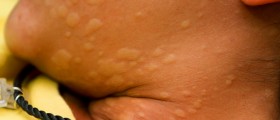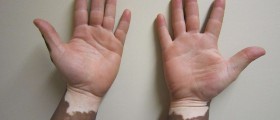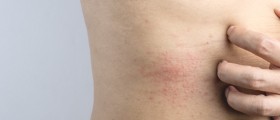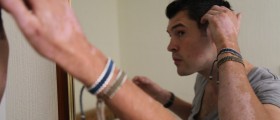
It is a widely known fact that the human skin is very sensitive. We sometimes forget that the skin is one of our major organs — as well as the largest organ we have — and it is easily affected by many different medical conditions. Not only does the skin have its own disorders and diseases that originate in some of the skin's layers, but many other health conditions manifest themselves through a disorder on the skin. When a person suffers from a health condition, it can be seen on the skin easily since it loses the previous brightness, smoothness and perfection. As it is said, a healthy person has a perfectly healthy skin.
Sun can Affect the Skin in Many Ways
Being in the sun is one of the top summer pleasures for most people, but on the other hand, the sun can also be held responsible for the onset of numerous different types of unpleasant reactions on the skin which can cause intense itching. There are two medical causes of a red rash on the skin after exposure to sunlight.
In most cases, the first exposure to hot sunlight after winter time is accompanied by a certain medical condition which is called polymorphous light eruption. This same medical condition is also known for often being associated with sun exposure after prolonged periods of time.
These red bumps sometimes appear the next time a person gets exposed to the sun and sometimes they don’t. Young women under 30, especially those who have very pale skin, are more likely to suffer from this medical condition when exposed to the sun. Another condition that may cause red bumps on the skin is allergy to the sun, which is medically referred to as solar urticaria. People prone to this medical condition react even to very short periods of sunlight on their skin. Solar urticaria is most common in people in their 30s, but people from all different age groups can develop this problem.
Symptoms
Polymorphous light eruption can be characterized by a red and itchy skin rash, which in most cases occurs on the chest, the lower arms, or the legs — depending on which areas of the skin were exposed to sunlight. If the skin rash becomes more serious, a person may develop a chill, nausea or headache. Solar urticaria related skin rash is red and sometimes swollen and this condition never affects the face or the hands. Nausea, vomiting, headaches or light-headedness can happen to a person whose large portions of the skin are affected by solar urticaria.
Itchy Skin on Legs
When the skin becomes blotchy, it is quite irritating and upsetting because constant itchiness and the occurrence of red rash are quite annoying. Sometimes, the blotchy skin is only restricted to the legs and not spread all over the body. It may seem like only a minor nuisance, but blotchy skin on the legs should be seen by a doctor and treated as well, since it causes a lot of irritation. Blotchy skin on the legs is a condition that is the worst in the morning and it tends to decrease as the day ends. It can affect any person of any age and if the prompt treatment is missed, it can spread to the other parts of the body.
Causes of Blotchy Skin on Legs
Various allergies are responsible for many skin disorders including the presence of blotchy skin on the legs. When a person is allergic to something, the immune system manufactures and releases the histamines that start to kill the allergens, thus resulting in the occurrence of itching, redness and blotches on the skin, including the legs.
Wearing shoes that are too right, or unclean socks, can also induce blotchy skin on the legs. Excessive exposure to the ultraviolet sun rays is also among the possible culprits for the incidence of blotchy skin on the legs. Intensely cold and dry weather tends to affect the skin, which soon loses its essential moisture and becomes blotchy. Several skin diseases like eczema, rosacea and dermatitis may also cause blotchy skin on the legs. Vitiligo is a skin condition that usually occurs due to prolonged sun exposure. It is observed that those people who have darker skin are more susceptible to development of vitiligo and subsequently blotchy skin on the legs.
Treatment Options
The skin always needs to be properly protected before being exposed to any sunlight. It is strongly advised not to go in the sun between 11 am and 3 pm, the times during which the UV rays are strongest, and to always wear protective sunscreen. Nevertheless, people who know that their skin tends to have serious reactions to sun exposure should try to minimize spending time in the sun, as well as wearing loose, white clothing made of natural fibers and that covers most of their skin. A hat white a wide brim is also recommended to protect the face.
Different types of sun allergies might be treated naturally or with the help of some allopathic treatments. Ice compresses are said to relieve mild skin rashes provoked by a sun allergy. Antihistamines are recommended for more serious allergic reactions and there are also some corticosteroids or zinc oxide products, available at almost all pharmacies. People allergic to the sun for a long time may also use aloe vera leaves. The leaf should be cut lengthwise and the aloe vera gel from the leaf should be applied to the allergy region of the skin. Fresh milk, applied to affected area is also considered to be a good remedy for the problem, as well as some oatmeal bath.













-Causes,-Symptoms-And-Diagnosis_f_280x120.jpg)



Your thoughts on this
Loading...